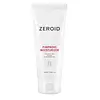What's inside
What's inside
 Key Ingredients
Key Ingredients

 Benefits
Benefits

 Concerns
Concerns

 Ingredients Side-by-side
Ingredients Side-by-side

Water
Skin ConditioningIsononyl Isononanoate
EmollientGlycerin
HumectantNiacinamide
SmoothingSodium Acrylates Copolymer
Butylene Glycol
HumectantBifida Ferment Filtrate
Skin ConditioningBetaine
HumectantCetearyl Alcohol
EmollientGlyceryl Glucoside
HumectantPropanediol
SolventPhenoxyethanol
PreservativeGlyceryl Stearate
EmollientXylitylglucoside
HumectantLecithin
EmollientDimethicone
EmollientSqualane
EmollientAnhydroxylitol
HumectantPEG-100 Stearate
Octyldodecanol
EmollientChlorphenesin
AntimicrobialXylitol
HumectantHydrogenated Lecithin
EmulsifyingCamellia Sinensis Leaf Extract
AntimicrobialBHT
AntioxidantTocopheryl Acetate
AntioxidantDisodium EDTA
1,2-Hexanediol
Skin ConditioningGlucose
HumectantSorbitol
HumectantAloe Barbadensis Leaf Juice Powder
Skin ConditioningPolyglyceryl-10 Dioleate
EmulsifyingLaminaria Digitata Extract
Skin ProtectingSodium Benzoate
MaskingPotassium Sorbate
PreservativeCeramide NP
Skin ConditioningXanthan Gum
EmulsifyingCaprylyl Glycol
EmollientCholesterol
EmollientPhytosphingosine
Skin ConditioningPhospholipids
Skin ConditioningDiatomaceous Earth
AbrasiveCeramide Ag
HumectantCeramide AP
Skin ConditioningCeramide Ng
Skin ConditioningAlpha-Glucan Oligosaccharide
CleansingGlyceryl Caprylate
EmollientPolymnia Sonchifolia Root Juice
Skin ConditioningMaltodextrin
AbsorbentCeramide EOP
Skin ConditioningLactobacillus
Skin ConditioningWater, Isononyl Isononanoate, Glycerin, Niacinamide, Sodium Acrylates Copolymer, Butylene Glycol, Bifida Ferment Filtrate, Betaine, Cetearyl Alcohol, Glyceryl Glucoside, Propanediol, Phenoxyethanol, Glyceryl Stearate, Xylitylglucoside, Lecithin, Dimethicone, Squalane, Anhydroxylitol, PEG-100 Stearate, Octyldodecanol, Chlorphenesin, Xylitol, Hydrogenated Lecithin, Camellia Sinensis Leaf Extract, BHT, Tocopheryl Acetate, Disodium EDTA, 1,2-Hexanediol, Glucose, Sorbitol, Aloe Barbadensis Leaf Juice Powder, Polyglyceryl-10 Dioleate, Laminaria Digitata Extract, Sodium Benzoate, Potassium Sorbate, Ceramide NP, Xanthan Gum, Caprylyl Glycol, Cholesterol, Phytosphingosine, Phospholipids, Diatomaceous Earth, Ceramide Ag, Ceramide AP, Ceramide Ng, Alpha-Glucan Oligosaccharide, Glyceryl Caprylate, Polymnia Sonchifolia Root Juice, Maltodextrin, Ceramide EOP, Lactobacillus
Water
Skin ConditioningGlycerin
HumectantCaprylic/Capric Triglyceride
Masking1,2-Hexanediol
Skin ConditioningPolyglyceryl-10 Distearate
EmulsifyingStearic Acid
CleansingTocopherol
AntioxidantSodium Polyacrylate
AbsorbentAllantoin
Skin ConditioningMyristoyl/Palmitoyl Oxostearamide/Arachamide Mea
Skin ConditioningOleamide Mea
Carbomer
Emulsion StabilisingArginine
MaskingPhytosterols
Skin ConditioningDimethyl Isopropanolamine
BufferingSodium Hyaluronate
HumectantBeta-Glucan
Skin ConditioningWater, Glycerin, Caprylic/Capric Triglyceride, 1,2-Hexanediol, Polyglyceryl-10 Distearate, Stearic Acid, Tocopherol, Sodium Polyacrylate, Allantoin, Myristoyl/Palmitoyl Oxostearamide/Arachamide Mea, Oleamide Mea, Carbomer, Arginine, Phytosterols, Dimethyl Isopropanolamine, Sodium Hyaluronate, Beta-Glucan
 Reviews
Reviews

Ingredients Explained
These ingredients are found in both products.
Ingredients higher up in an ingredient list are typically present in a larger amount.
1,2-Hexanediol is a synthetic liquid and another multi-functional powerhouse.
It is a:
- Humectant, drawing moisture into the skin
- Emollient, helping to soften skin
- Solvent, dispersing and stabilizing formulas
- Preservative booster, enhancing the antimicrobial activity of other preservatives
Glycerin is already naturally found in your skin. It helps moisturize and protect your skin.
A study from 2016 found glycerin to be more effective as a humectant than AHAs and hyaluronic acid.
As a humectant, it helps the skin stay hydrated by pulling moisture to your skin. The low molecular weight of glycerin allows it to pull moisture into the deeper layers of your skin.
Hydrated skin improves your skin barrier; Your skin barrier helps protect against irritants and bacteria.
Glycerin has also been found to have antimicrobial and antiviral properties. Due to these properties, glycerin is often used in wound and burn treatments.
In cosmetics, glycerin is usually derived from plants such as soybean or palm. However, it can also be sourced from animals, such as tallow or animal fat.
This ingredient is organic, colorless, odorless, and non-toxic.
Glycerin is the name for this ingredient in American English. British English uses Glycerol/Glycerine.
Learn more about GlycerinWater. It's the most common cosmetic ingredient of all. You'll usually see it at the top of ingredient lists, meaning that it makes up the largest part of the product.
So why is it so popular? Water most often acts as a solvent - this means that it helps dissolve other ingredients into the formulation.
You'll also recognize water as that liquid we all need to stay alive. If you see this, drink a glass of water. Stay hydrated!
Learn more about Water